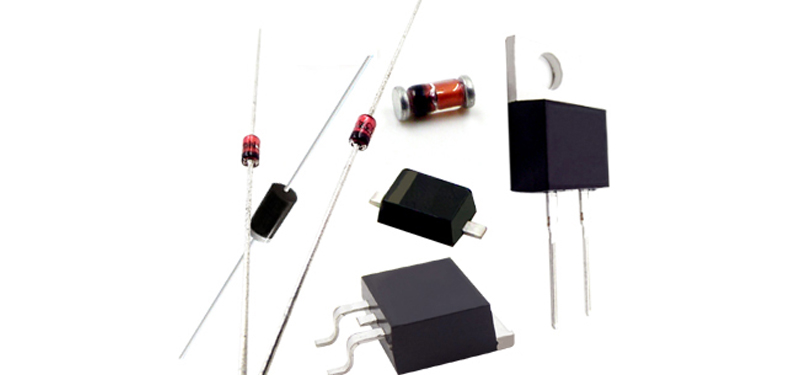

The main characteristic of a diode is unidirectional conductivity, that is, under the action of a forward voltage, the on-resistance is small; and under the action of a reverse voltage, the on-resistance is very large or infinite. Because of the above characteristics of the diode, the cordless telephone is often used in circuits such as rectification, isolation, regulation, polarity protection, coding control, FM modulation, and squelch. This article mainly explains the diode identification method and test precautions.
The function of the crystal diode can be divided into: rectifier diode (such as 1N4004), isolation diode (such as 1N4148), Schottky diode (such as BAT85), light-emitting diode, and zener diode.
Diode identification method:
The recognition of the diode is very simple. The N pole (negative) of the low-power diode is mostly marked with a color circle on the outer surface of the diode. Some diodes also use the diode-specific symbol to indicate the P pole (positive pole) or the N pole (negative pole). The polarity of the diode is determined by using the symbols "P" and "N". The positive and negative electrodes of a light emitting diode can be identified by the length of the pin, with the long leg being positive and the short leg being negative.
Diode test considerations:
When using a digital multimeter to measure the diode, the red lead is connected to the anode of the diode, and the black lead is connected to the cathode of the diode. The measured resistance at this time is the forward conduction resistance of the diode. This is exactly the same with the pointer of the analog multimeter. in contrast.
In almost all electronic circuits, semiconductor diodes are used, which play an important role in many circuits. It is one of the earliest semiconductor devices and its application is very extensive.




